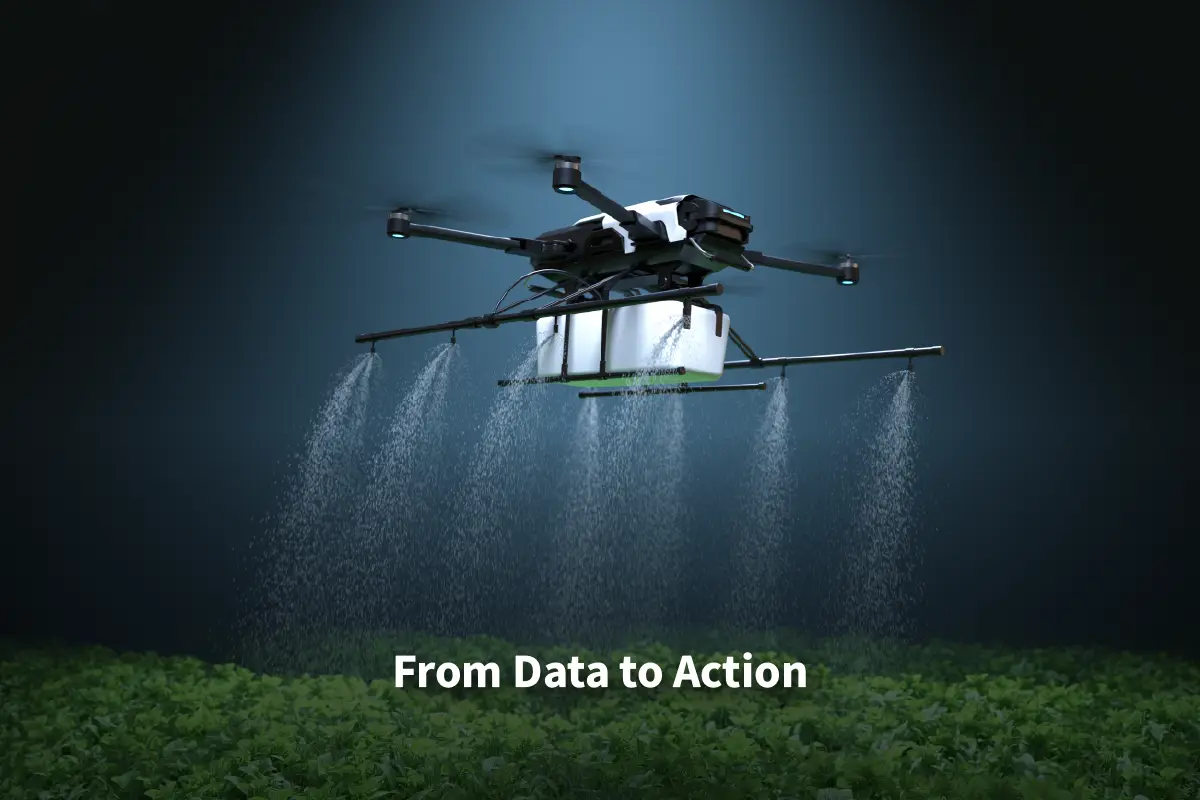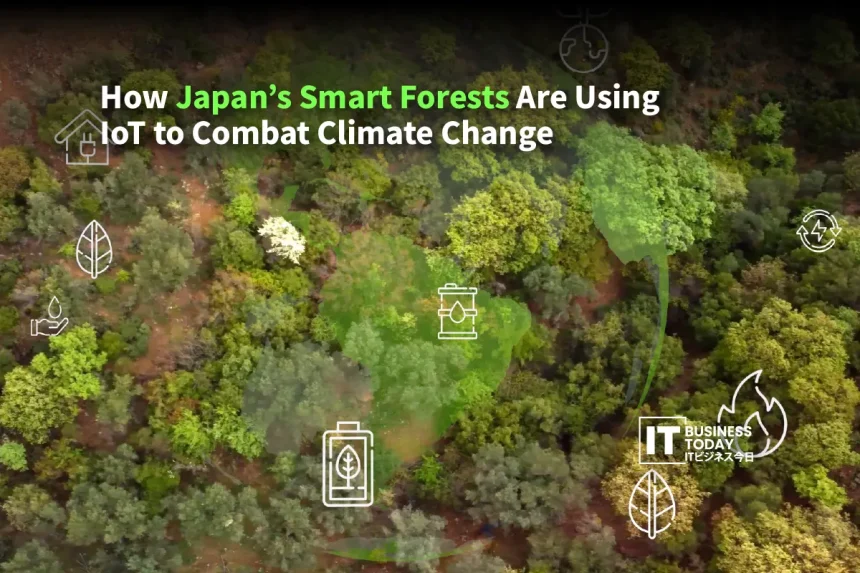For decades, Japan’s lush forests covered almost two-thirds of the land. They served as quiet, passive guardians. They absorbed carbon, supported biodiversity, and provided timber. Still, their true potential was often locked away. Japan is leading a quiet change in forest management with its new ‘Smart Forests’ idea. Forests can become smart tools against climate change with the Internet of Things (IoT). Old methods couldn’t keep up with fast climate change. This new approach helps manage it better. Japanese business leaders face challenges with sustainability rules, carbon neutrality goals, and strong supply chains. Understanding this change goes beyond being environmentally aware; it’s about having strategic insight.
The Urgent Need for Active Forest Management
The climate crisis requires immediate, active intervention. Rising temperatures and shifting rainfall patterns overwhelm forest ecosystems. Typhoons and other extreme weather conditions now occur more frequently, exacerbating the stress. According to the Japan Meteorological Agency, the annual average temperature in Japan has increased by approximately 1.4°C over the past century.
We must do more than protect forests, we must restore and expand them. We need smart management to strengthen their resilience and boost their carbon absorption. Japan knows it’s vulnerable to climate change. It is dedicated to ambitious carbon neutrality goals. It recognized this need early on. The challenge was to manage large, often remote forest areas effectively. These areas are also complex in shape and size. Enter the power of connected technology.
Also Read: Emotion AI and the New Rules of Customer Journey Mapping
The Anatomy of a Smart Forest
Picture a forest where trees, soil, streams, and the microclimate talk to each other. This is the reality taking root across Japan. Smart forests use a smart network of IoT sensors placed throughout the ecosystem:
- Tree Health Monitors: Small sensors on trunks track key signs. They track growth rate, sap flow, and small vibrations. Sap flow indicates water stress and photosynthesis. Tiny vibrations can signal pests or disease. This way, problems can be identified before symptoms show. This granular data replaces guesswork with precise understanding.
- Environmental Sentinels: Ground and canopy sensors monitor soil moisture, temperature, nutrients, light, humidity, and CO2 levels all the time. This shows a live view of the forest’s microclimate. It also connects to the larger environment.
- Hydrological Watchers: Sensors in streams and soil monitor water flow, quality, and erosion risks. They are key for protecting watersheds. They also help us see how changing rainfall patterns affect the ecosystem.
- Remote Vigilance: Satellites and drones use multispectral and LiDAR sensors for clear data. They help us see canopy cover. They estimate biomass and track where species are found. They also notice big changes, like deforestation or storm damage. Drones are also increasingly used for precision seeding in reforestation efforts.
This constant stream of raw data is meaningless without interpretation. Artificial Intelligence (AI) and machine learning act as the Smart Forest’s main brain. Smart algorithms analyze large datasets. Data analysts uncover patterns, forecast future trends, and identify anomalies. They forecast disease outbreaks. They model how climate change affects forests. They also improve irrigation and drainage systems. They can also calculate carbon sequestration rates for individual trees or small areas accurately.
From Data to Action

Smart Forests have real power when they turn intelligence into real climate action:
- Precision Forestry for Maximum Carbon Capture: Foresters can now manage forests with precise methods rather than a broad approach. Data shows which areas or specific trees are struggling with carbon uptake. This can be due to disease, overcrowding, or lack of nutrients. You can thin certain areas, add species in specific spots, or improve the soil where needed. This boosts the forest’s ability to store carbon efficiently. According to a study, precision forest management techniques can increase carbon sequestration by at least 10%.
- Proactive Resilience Building: Predictive analytics help forest managers spot threats. For example, they can predict bark beetle outbreaks from warmer winters. They also see higher fire risks during long droughts. Early warnings help us take action. We can use biological controls for pests or set up firebreaks. These steps protect large carbon stores that might be released during disasters. Protecting mature forests is one of the best ways to reduce carbon right now. Smart Forests help us take action to protect these forests.
- Optimized Reforestation and Afforestation: Planting trees is good. However, planting the right trees in the right place and time makes it much better. Plus, we must ensure they thrive. IoT data helps choose species by predicting future climate suitability for a site. Soil sensors ensure optimal planting conditions. Drone seeding and monitoring greatly boost efficiency and survival rates in reforestation. They help restore degraded land into effective carbon sinks quicker and more reliably.
- Water Security and Biodiversity Corridors: Healthy forests are fundamental to water cycles. Smart monitoring helps manage forests and protect watersheds. This is vital for both communities and industries. Also, understanding microhabitats with sensor data helps create and safeguard biodiversity corridors. This strengthens ecosystem resilience. It’s crucial for adapting to climate change over time.
Why Japanese Leaders Should Care

This isn’t just an environmental story; it’s a narrative rich with business relevance:
- Meeting Carbon Neutrality Commitments: Scope 3 emissions are a big challenge. They mainly come from land use and supply chains. Investing in or partnering with Smart Forest initiatives helps companies offset unavoidable emissions effectively. IoT data allows for accurate carbon accounting. This gives investors and regulators the credibility they want.
- Sustainable Supply Chain Resilience: Industries that rely on timber, paper, or forest-based biomaterials can use Smart Forests as a guide for sourcing sustainably. Real-time monitoring helps keep harvest levels sustainable. It also prevents illegal logging and ensures the resource base stays healthy. This reduces risks in the supply chain that come from damaged forests. Japan lost approximately 24.7 kha of natural forest in 2024 as reported by Global Forest Watch.
- Innovation and New Market Opportunities: New markets are popping up. They include special forest IoT sensors. They also have strong communication networks for remote areas. Smart AI analytics platforms are part of the package, along with drone services for forestry. Japanese tech firms can shine in these fields.
- Corporate Reputation and Stakeholder Trust: Investing in modern, nature-based climate solutions boosts brand value. It strongly appeals to eco-friendly consumers, workers, and investors. They want real climate action.
- Risk Mitigation: Healthy forests can reduce risks such as landslides and flooding. These events can be super damaging to infrastructure, communities, and businesses downstream. Smart Forests help regions adapt to climate change. This, in turn, safeguards business assets.
Case in Point
While comprehensive national rollout takes time, pioneering projects showcase the potential. The Japanese Forest Agency is teaming up with local governments, universities, and tech companies. They are starting pilot Smart Forests. In Kyushu, sensor networks check the health of cedar plantations. These trees are at risk from certain pathogens. This allows for targeted treatments instead of using pesticides everywhere. In Hokkaido, drones watch over new forests. Ground sensors track their growth and carbon absorption. This data helps improve efforts to restore degraded land. Major Japanese companies see the value in Smart Forest projects. They are starting to invest directly in these initiatives. This move is part of their sustainability and carbon management plans. They view forests as more than just offsets. Instead, they see them as important, tech-enhanced natural infrastructure.
Collaborative Action Required
Reliable communication in deep forests requires bold innovation. We need to use advanced analytics and skilled experts to handle the large data generated. Merging traditional forestry know-how with cutting-edge technology is essential. Data privacy and security take top priority.
To overcome these obstacles, we must forge unprecedented partnerships:
- Public-Private Partnerships (PPPs): Governments need to support private investment in Smart Forest infrastructure. They should offer financial help and policy backing. This will speed up deployment and share risks.
- Cross-Industry Collaboration: Technology providers, forestry companies, research groups, and big users of carbon credits or sustainable timber should team up. They need to share data, standards, and best practices whenever they can.
- Investing in Training: We need to train experts in forestry ecology and data science/AI. This will help ensure the success of this transformation in the long run.
- Strategic Rollout: We can maximize impact by focusing on high-risk or high-potential areas. This includes critical watersheds, carbon-rich old-growth forests, and vulnerable plantations. Targeting these spots will help us prove the concept for broader Smart Forest adoption.
A Call to Action for Japan’s Business Vanguard
Japan’s Smart Forests are more than a tech wonder. They show a big change in how we connect with nature. They shift us from being passive observers to active, informed stewards. We use our best technology to protect and improve our vital natural systems. For Japan’s business leaders, this is not a distant environmental project. It is a concrete strategy.
You can help build these smart ecosystems. You can invest directly. You can also form tech partnerships. Another option is committing to sustainable sourcing. Finally, you can support friendly policies. Integrating Smart Forest principles into corporate sustainability plans helps businesses in many ways. They can gain verifiable carbon offsets, create strong supply chains, and spark innovation. This also boosts their reputation and supports national and global climate goals.
The forests are getting smarter. The big question for Japanese industry is: How soon will leaders use this knowledge to build a sustainable and successful future? Observation time is done. Now, we move into a new era of smart, teamwork-driven action in our forests. The competitive edge comes from more than cutting down carbon footprints. It’s about building solutions that lower it, tree by tree.







